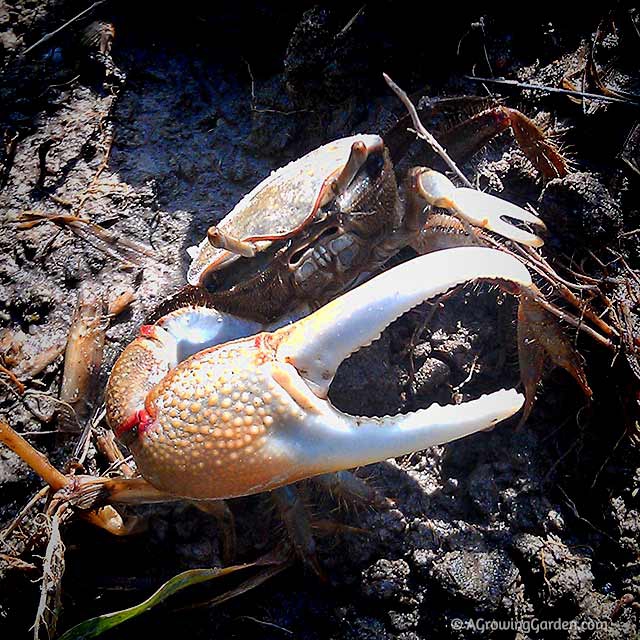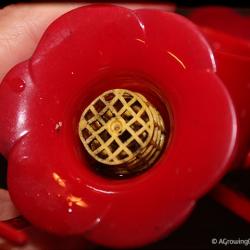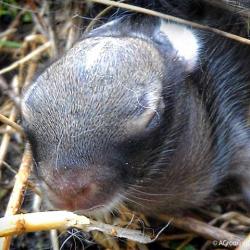
At the risk of sounding like a broken record, have I told you how wet our garden has been this year? According to WeatherUnderground.com, our area has received 12.50 inches of precipitation just from May 1 through July 13. It is so wet, that the fiddler crabs apparently think our garden is now part of their muddy, wet territory -- they've come up from the creek and are poking around in the garden! Yep, I was greeted by this feisty little guy when I entered the vegetable garden yesterday.
Although the blue crabs live deep in the water, the little fiddler crabs live on beaches, mud flats, and marshes. I often see them scurrying around near the water's edge or up around the creek banks. Our vegetable garden, however, is not near the creek. It's about 250 feet away from the edge of our creek and I think this crab must have gotten confused and thought our sopping wet garden had become part of the marsh. Either that or he just needed to stretch his four pairs of walking legs.
Chesapeake Bay Fiddler Crabs
Living in the Chesapeake Bay region is fantastic. We have all kinds of interesting wildlife everywhere you look. There are three types of fiddler crabs found throughout the area: Red-jointed fiddler crab (Uca minax), Marsh fiddler crab (Uca pugnax), and Sand fiddler crab (Uca pugilator).
I think the crab in my garden was a male Red-jointed fiddler crab. Red jointed fiddler crabs live predominantly in marshes and are more tolerant of lower salinity. This little fiddler crab was certainly feisty and seemed very ready to use that big claw on me if I tried to touch him (which I didn't). I'm sure I made him wish he had never ventured out so far from his burrow ... after our short meeting, he scurried off into some daylilies and probably started on the trek back down to the creek.
Did you know that female fiddler crabs have claws of equal size, but the male fiddler crabs have one enlarged claw that can grow up to 2 inches long? They use their big claw mostly to woo the ladies. The males hang out by their burrows and when a female comes by, they wave their big claw to get the attention of the female. If the female likes what she sees, she follows the male down into his burrow.
And they live happily ever after.
The end.












Join the Conversation!